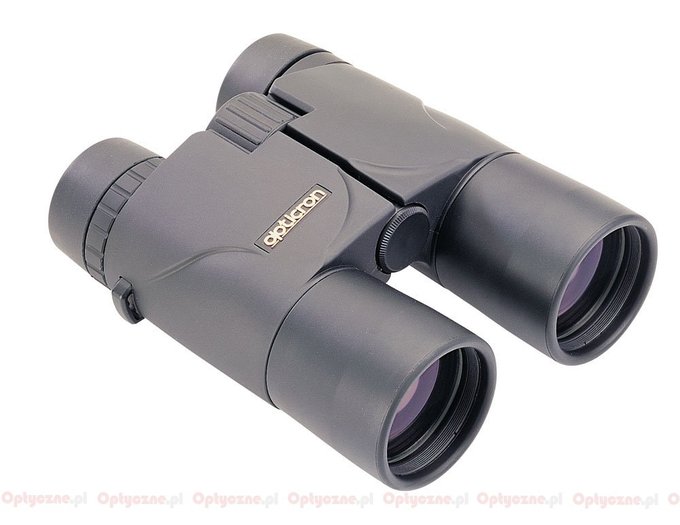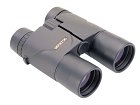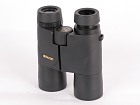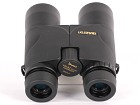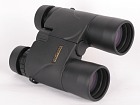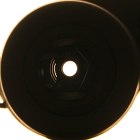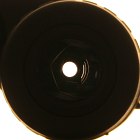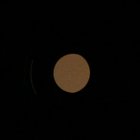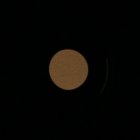Opticron Verano 10x42 BGA PC
The body is made of light but solid aluminum padded with high quality rubber. The binoculars are sealed so they are submersible down to a depth of 3 meters. They are also “fogproof” as they are nitrogen-filled.
The 32-42 mm class instruments provide a sharp image already from 1.8 meters; bigger - from 3 meters. They come with a 30-year-long guarantee.
| Magnification | Lens diameter | Angular field of view | Prisms | Eye relief | Weight | Price |
|---|---|---|---|---|---|---|
| 10 | 42 | 105/1000(6o) | Bak-4/roof | 17 mm | 630 g | 1850 PLN |
Summary
Pros:- handy and solid housing,
- most of the field of view is sharp,
- slight astigmatism,
- low coma,
- slight light fall-off,
- sharp image already from1.5 metres,
- good quality BaK-4 prisms,
- long guarantee period.
Cons:
- distinctly egg-shaped pupils,
- chromatic aberration at the edge of the field of view very clearly visible.
W kolejnej odsłonie testu lornetek 10x42 zmierzyło się pięć bardzo
podobnych do siebie instrumentów. W kolejno¶ci alfabetycznej s± to:
Bynolyt Buzzard SHR, Ecotone AD-7, Fomei Diplomat, Opticron Verano
oraz Vixen Apex Pro. Poniższa tabela prezentuje porównanie własno¶ci
i cen tych instrumentów.
In the next stage of the 10x42 binoculars test five very similar instruments competed against each other. In alphabetical order these are as follows: the Bynolyt Buzzard SHR, the Ecotone AD-7, the Fomei Diplomat, the Opticron Verano and the Vixen Apex Pro. The chart below shows a comparison of properties and prices of those instruments.
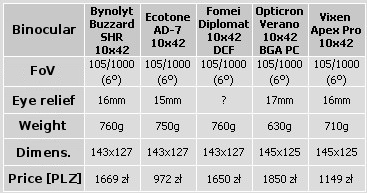
As you see, the parameters of these binoculars are almost identical. All of them are small, handy and light constructions of practically the same weight and the same dimensions and identical field of view. Their exteriors don’t differ either as can be seen in the photo below.
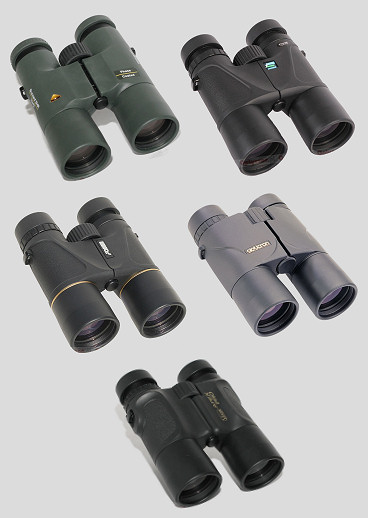
The weight differences are so small we can suspect in every set of binoculars an identical optical system was used in the sense of the number of elements and groups. The instruments can differ slightly when it comes to the eyepieces’ construction which might be suggested by minimal differences in eye relief values, changing from 15 to 17 mm. What’s more, the binoculars have certainly different coatings which is clearly visible if you just glance at their colours and intensity.
When it comes to the score in the test the binoculars occupy exactly the same quality segment. All of them got about 123 points and the difference between the best and the worst amounts to only 2.5 points. It is really not much because 2-4 points constitute the estimated summary error of our testing methods. From the statistical point of view the score differences are practically negligible, although they lead to interesting conclusions.

Common traits of all the binoculars are quite visible. Because of small dimensions the prisms distinctly limit the light access through egg-shaped pupils. That effect is bigger for the left pupil. Short and small construction is also the source of problems with chromatic aberration correction. The eyepieces with the 60-degree-wide field of view don’t show sharp images to the very edge and about 20% of the field is visibly blurred. The binoculars’ transmission level is not impressive (apart from the Buzzard) because of the light loss on vignetting pupils and aluminum coatings on the prisms (only the Bynolyt used better SHR coatings).
It’s worth noticing that the Vixen, which is the cheapest, fared the best of these five devices. Vixen is a Japanese company after all and its factory is also situated in Japan. If you are close to the factory you can control it efficiently and cut costs at the same time.
One of the most expensive binoculars here is the Bynolyt Buzzard. The higher price can be justified by using special coatings on the prisms which enhance transmission (SHR). The test score seems to confirm it fully. In categories connected with the coatings (transmission, flares or coatings) the Bynolyt fares significantly better than the competitors although it wastes that advantage in other categories. If you consider transmission and a long guarantee period to be very important features the Bynolyt will be an excellent choice.
The next interesting suggestion is the Ecotone AD-7. Its score is the worst in this group but the price/quality ratio undoubtedly the best. Certainly it is a product worth pondering.
Perhaps the most difficult positions occupy the Fomei Diplomat and the Opticron Verano. For a really significant amount of money, compared to their rivals they offer nothing more than good guarantee conditions. When it comes to the optics and build quality their level is exactly the same as that of twice cheaper instruments from Vixen and Ecotone. Opticron Verrano is a bit lighter and it might be also a serious asset.




